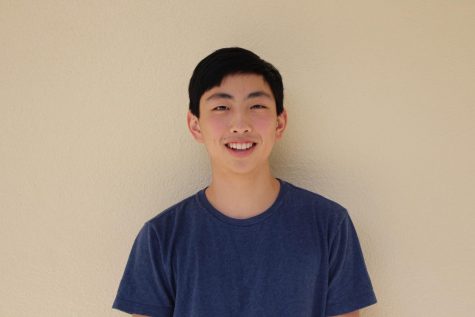Growing Up With Gangs
Written in collaboration with students in Elizabeth Tompkins’ English 10 class.
– – –
The crisp January air clouds with puffs of breath as one student* recounts his experiences growing up with local gang activity.
“One time I got jumped by a couple of gangsters, [or] gangbangers, like a long time ago,” the neatly dressed sophomore boy said. “I got jumped by gang members with bats and knives, because I was with my friends, and they were also gangbangers.”
It’s hard to imagine that any of this could happen to one of our students, and while the school has long moved past major issues with gangs on campus, the influence of gangs is still present in some students’ lives outside of school. The complex issue of regulating gang activity also points to a larger systemic issue of police perpetuating racial bias, which continues even in Mountain View.
Growing up in the hood
The term “gang” generally refers to groups of three or more members who share an identity and are involved in criminal activity. In Mountain View, the two main Latino gangs are the Norteños and the Sureños. Conflicts between members often result from them crossing into each other’s territories. One way they identify who’s on which side is that Norteños wear red, while Sureños wear blue.
“If I go dressed like this [in blue jeans and a blue trimmed hoodie] and cross the train tracks on Rengstorff, I could get jumped for anything because that side’s [all red], and this side is all blue,” the student said.
Gangs begin recruiting members in elementary and middle school. The biggest incentive that gangs offer for young recruits is a structured community.
“I never actually was part of a gang, but there was one point in time where I wanted to [be],” the student said. “But then I was like, ‘I don’t want nothin’ with [trouble] so why even bother?’ Mostly what makes you go into it is the lack of love from your parents or the lack of love from anybody else, or mostly because you feel lonely sometimes, or because you want respect.”
But this respect isn’t the kind that is taught in classrooms — it’s the kind that is achieved through violence.
“I’m just like, ‘Why you wanna [jump people]? What do you win?’” the student said. “[My friends are] like, ‘You get respect,’ and I’m like, ‘Fool, you don’t get respect like that, it’s not good respect. It’s called fear.’ Respect is earned from people… when they admire you, that’s respect.”
The clothing and racial stereotypes of gangs influence the way society and law enforcement perceive people of color who grow up in the culture. The student confirms that the stories of systemic racial injustice due to this type of profiling don’t just happen in distant communities; they also have happened to him, multiple times.
“The police sometimes just stop me for no reason,” the student said. “I got stopped behind the school in broad daylight with my friends. I was walking my bike, and the cops were like, ‘Where’s the weed?’ even though we were just going home and didn’t have any drugs.”
The problem is complicated. Police are trying to minimize crime, but their process of trying to pinpoint actual criminals can rely heavily on racial profiling. The fact is that innocent youth of color will experience constant police stops and discrimination as a result of this stereotyping.
“Back in seventh grade, I was riding my bike at night with my friend and all of a sudden cops stopped me,” the student said. “They questioned us, and my mom kept calling me, because it was already dark, and she thought something happened to me. They let us go, but they had us there for like an hour. They profiled me as a criminal, even though I was just going home with some milk for my family.”
Since then, the student has learned ways to cope with the pressures of living around gangs and avoiding police incidents, but the path has never been easy. With all the years he’s spent on the streets with his friends, he’s now especially aware of how to keep himself safe.
“When someone aggravates you or tries to do something to you, which happened last month to me, just ignore it because you have more power than them if you can defend yourself,” the student said. “Now I don’t really care about [gang-related] fight pickers. As long as they don’t touch me physically, I’m good. They can talk all they want.”
What the MVPD does about it
Since 1996, the Mountain View Police Department has run a gang prevention effort titled “Dreams and Futures,” where they take youth who display at-risk behavior on a two-week full-day summer program. The program includes academics, athletics and enrichment programs, such as field trips to the Monterey Bay Aquarium.
“I think it’s a pretty effective effort… but you’re never going to stop all gangs,” MVPD Gang Supression team leader Sergeant Leal said. “[Some kids] are doing great with their lives. Being responsible parents, responsible human beings and everything. Then [there are] kids who decided to go the gang route, and I’ve had to testify in court and put them in prison, which is pretty darn depressing.” ◊
*Name withheld at the request of the student



